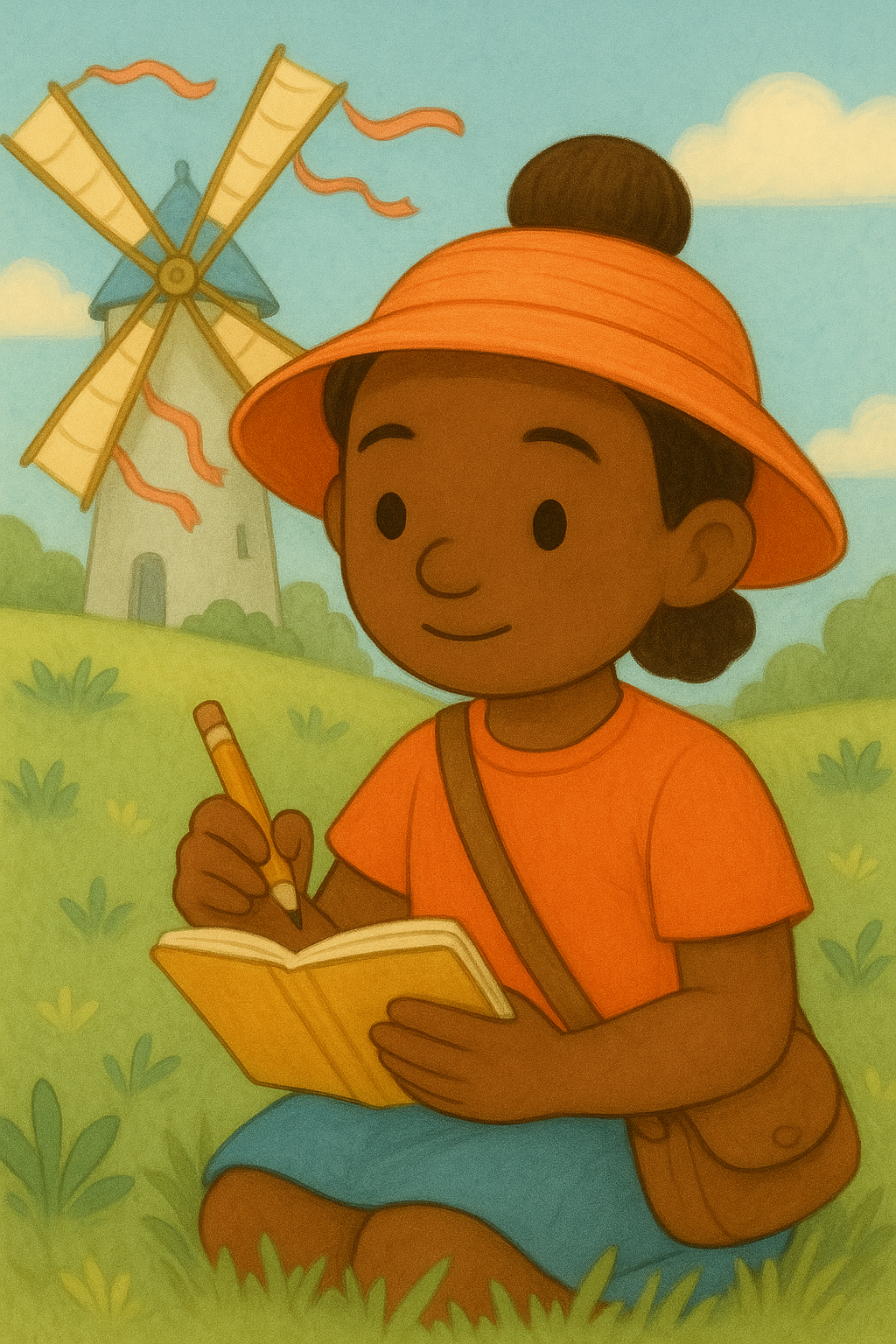Aya and the Windmill

🌪️ Aya and the Windmill
Aya liked to listen to the wind.
It wasn't just noise to her.
On some days it rolled over rooftops like a ball.
On other days it came in long, sweeping lines,
sliding through trees and across the park.
Sometimes it was sharp, poking at cheeks and making hair fly.
On this day, though, the wind was unsettled.
It snatched socks off clotheslines,
flung newspaper pages down the street,
and swept hats right off people's heads.
In the middle of the park, Aya stopped and looked up.
The wind was everywhere.
And yet, in the corner of the park,
the tall wooden windmill with faded white blades stood completely still.
Even in such a strong wind, it didn't turn at all.
Aya frowned. Something about that didn't seem right.
The next day, the windmill was still.
Birds avoided it.
The grass around its base was flat and bare, as if no one had been near it for years.
Aya walked around it, looking closely.
The blades were jammed,
the hinges rusted,
and the wood warped from the sun.
She opened her notebook and drew what she saw.
In the days that followed, she came back again and again.
She read at the library about how old windmills used to work.
She borrowed a few small tools from the shed at home.
And every afternoon she made small changes:
pulling out weeds that clung to the base,
loosening a bolt that wouldn't turn,
finding where the wood needed bracing.
It was slow work.
Sometimes she had to stop and think about the order of things.
Other times the wind caught her paper and sent her sketches tumbling across the grass.
But she kept coming back.
Three days in, the blades finally shifted.
At first it was only a slight movement,
a creak so faint it might have been the groan of an old tree.
Then, as the wind pressed harder,
the blades turned a little,
slow and stiff, but moving again.
Aya sat on the grass to watch.
The windmill spun,
but it still looked heavy,
as though it remembered how to work but not how to enjoy it.
She turned a pencil slowly between her fingers,
thinking.
The next morning, she brought something new:
long strips of fabric in bright blue, green, and yellow.
She tied them to the ends of the blades.
When the wind came, the ribbons lifted,
streaming behind the blades,
tracing patterns in the air.
The blades began to move more easily.
Each time they turned, the ribbons curved,
making arcs of color above the park.
People walking past stopped to watch.
Aya made a few more adjustments—
tightening a hinge here, smoothing a beam there—
until the windmill swayed just slightly from side to side as it spun.
The fabric added a softness that had been missing.
In the days that followed, the park began to change.
The wind no longer rushed straight through.
It curled around the windmill, lifted by the spinning blades,
and slowed into a playful rhythm.
Birds started to land on the wooden arms,
resting for a moment before gliding off again.
The creak of the blades turned into a gentle hum.
And as the ribbons snapped and fluttered,
they made the windmill look as if it were dancing.
More people noticed.
Children ran to see the colors.
Someone left a bunch of wildflowers tied with string to the fence.
An older man came and sat nearby with a sketchbook.
Aya came every evening,
checking the bolts,
oiling the hinges,
sometimes just sitting and watching how the wind moved differently now.
One late afternoon, as the sun dipped low and the light turned gold,
she sat under the windmill with her notebook.
On the last page, she wrote:
"Sometimes things stay stuck for a long time.
If you look closely, you can figure out why.
And then, little by little, they can move again."
The wind rose, turning the blades above her head.
Bright ribbons traced soft loops in the sky.
And the old windmill kept turning,
lighter now,
as if it had been waiting all this time for someone to notice.
🌪️